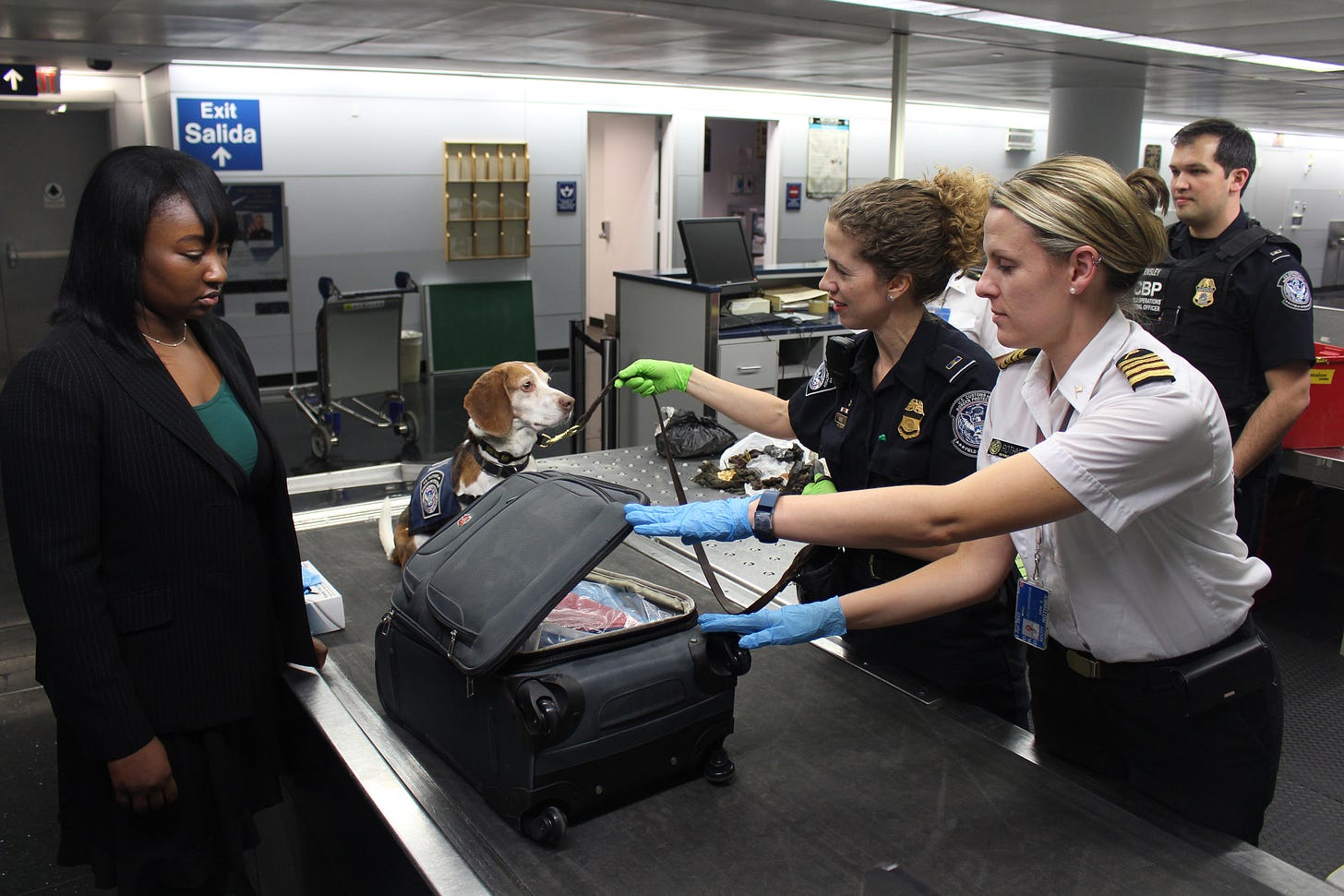Landlocked: When do green card applicants "have to stay" in the United States?
This post will explain the details of the question raised all the time: "I heard that there is a period of time during the green card process when I can't leave the US."
If you enter the United States and you seek a green card, then the final stage of the green card process is either
the I-485 adjustment of status application, or
immigrant visa processing through a U.S. consulate.
The vast majority of EB (Employment-Based) immigrants are already in the United States in another visa status and are seeking to “adjust status” to obtain a green card in the United States through the I-485 process.
If you file an I-485 application to “adjust status” from temporary visa status to permanent resident status, then USCIS rules assume you plan to stay in the United States until you receive a green card. This is an antiquated thought but that is how the law is structured.
Because the assumption is that you will stay in the United States while your green card application is pending, if you leave the United States while your I-485 application is pending, then your I-485 application is deemed ‘abandoned’ UNLESS you first obtain Advance Parole (AP) travel authorization.
** This is the General Rule: You must stay in the United States while your I-485 application is pending until either you obtain AP travel authorization, or you obtain your green card.
There is an IMPORTANT EXCEPTION to the General Rule, namely, the DUAL INTENT EXCEPTION.
If you are in the United States in H-1B/H-4 or L-1/L-2 visa status, then those are considered “dual intent” visas, and so if you have one of the “dual intent” visa status, then you are permitted to travel abroad while the I-485 application is pending and re-enter the United States with a valid H-1B/H-4 or L-1/L-2 visa.
So the IMPORTANT EXCEPTION TO THE GENERAL RULE OF ABANDONMENT IS if you travel abroad with a valid dual intent visa status, then your I-485 is NOT considered abandoned.
People who are in the United States in H-1B/H-4 or L-1/L-2 status therefore have considerable advantage when filing their I-485 than people in any other status. It is precisely this important exception why some people incorrectly think that only dual intent non-immigrants can process for green cards. That is not correct. Anyone in any visa status can potentially seek a green card.
Now, if you are in any other visa status besides dual intent visa status (H-1B/H-4, or L-1/L-2), and you file your I-485 application, then you MUST stay in the United States until you either get a green card or you get AP travel authorization.
Sadly it can take several months to get a green card or AP travel authorization.
In theory it is possible to request expedited AP travel authorization but as a practical matter, in December 2022 (at the time I am writing this post), it is basically impossible to get expedited AP.
(Hopefully things will improve in 2023).
NOTE 1: If you were ever in the United States and you were “out of status” - then you may not necessarily be eligible for AP travel authorization. I mainly work with non-immigrants who have NOT violated their non-immigrant visa status and so if they file their I-485 applications, we also generally apply for and generally receive their AP travel authorization, but people who have been out of status should tread cautiously about the availability of AP travel authorization and in general people who have been out of status should retain qualified legal counsel to advise them on important issues like this.
Overall, you do not want to casually travel abroad and find out you cannot easily re-enter the country or that you have ‘screwed up’ something you filed and was still pending.
NOTE 2: If you get AP travel authorization, which is sometimes part of an EADAP “combo card” but is also sometimes a standalone document, and you do travel abroad, then when you re-enter the United States, it is absolutely important that you affirmatively present your AP travel authorization to U.S. Customs because occasionally with busy airports and busy people, a person might accidentally get admitted in their prior F-1 or J-1 or O-1 visa status (or whatever) when they really need to be ‘admitted’ with AP travel authorization.
(Immigration nerds will note that ‘admitted’ is not the right word when you present AP travel authorization; rather you are ‘paroled’ back into the country - but that sounds sort of shady and criminal!)
NOTE 3: When a person does present AP travel authorization to U.S. Customs, that person should expect additional processing (QUESTIONING) in ‘secondary’ because technically the U.S. Customs officer can (and almost always does) check to make sure the underlying I-485 application is still pending. If the I-485 application had been denied while you were abroad, then the U.S. Customs officer would have a potential basis to deny entry (parole) to you.
This is another thing to consider - if you decide to travel abroad and USCIS issues a request for evidence or biometrics appointment notice, you will want to arrange with a family member or friend to check your mail daily as you do not want to miss any important mail from USCIS. You probably do NOT want your mail held by the U.S. Post Office. It is much better to have a friend or family member check your mail daily.
To be clear - going into Secondary processing at U.S. Customs is a real drag, especially if you are traveling with small children. You have just completed a long international flight and now you might end up sitting around in a government office for an extra 1-2 hours (or more!). No fun. So keep that in mind if you really, really need to travel to your 2nd cousin’s wedding in Goa, with your toddler.
NOTE 4: People in the US in F-1 or J-1 or O-1 visa status (or various other non-dual intent statuses, like TN or R-1) - those people might consider processing their final stage green card process through immigrant visa processing as opposed to adjustment of status and continuing in their current non-dual intent nonimmigrant status. These are important considerations where you might want to consult a qualified attorney.
If you are going through EB immigration and you will be filing an I-140, you really want to make a plan at the time you file the I-140 because if there is ANY CHANCE you want to do immigrant visa processing, then you should indicate it on the I-140 so that the I-140 approval is sent to the U.S. Department of State’s National Visa Center.
It is much easier to select/elect “immigrant visa processing” and then change your mind and do “I-485 adjustment of status” than vice versa. If you later decide to do immigrant visa processing but you already have a pending or approved I-140 prepared for adjustment of status, then you may have to file Form I-824, which is relatively expensive and slow. ACTUALLY VERY SLOW!
In general, you should always tread cautiously when you leave the United States and think through the basis for which you will return and what documents will be required.
Leaving the United States actually results in a lot of potential problems for people but I realize that in the year 2022, many people have regular international travel plans.
FINAL NOTE: The above relates to non-immigrants transitioning to legal permanent resident (green card status). There are separate important issues for green card holders who plan to travel abroad especially if they are going to take an international assignment which means they will be abroad for several months or years. I hope to post separately (and soon) on those ‘green card retention’ issues.
Thank you for taking time to read this post.
If you have questions, please put them in the comments or email me at bob@webberimmigration.com.







Very interesting! Thank you for that! I've always wondered if people on F1 visa, who have a PERM filed by a prospective employer, can leave the return on a F1 status (with a valid I-20) or if they would have their F1 entry denied because of the PERM... (maybe the officer would think they don't really have F1 intent since they will be soon applying for an EM visa).